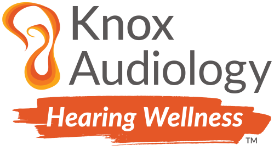Hearing conservation in the workplace: Tips for employers and employees

Noise-induced hearing loss is a type of hearing impairment that results from exposure to loud sound. It can occur after a one-time exposure to an intense sound, like an explosion, or from continuous exposure to loud sounds over an extended period, such as noise from machinery or loud music. Noise-induced hearing loss can be immediate, or it can take a long time to become noticeable.
Occupational Noise Induced Hearing Loss
Construction workers, machine operators, plant and manufacturing workers, truck drivers, rail transport employees, coal miners, airport ground crew, and music industry employees are among the professionals at risk for occupational noise-induced hearing loss. Occupational noise-induced hearing loss, commonly known as industrial deafness, is defined in the NOHSC National Code of Practice (2004) as hearing impairment resulting from exposure to excessive noise at work.
Occupational noise-induced hearing loss is a widespread yet preventable condition that affects approximately one-third of Australians. It is often caused by:
- Immediate exposure to sudden, extreme noise levels above 140 dB
- Prolonged exposure (lasting an uninterrupted 8 hours) to noise levels over 85 dB
- Chronic exposure to specific chemicals which, when combined with moderate to intense noise, harm the ear’s inner mechanisms.
Hearing conservation in the workplace is crucial not only for ensuring the long term health and safety of employees but also for minimising the financial burdens associated with healthcare costs and productivity loss borne by Australian businesses.
Here are some tips for both employers and employees to effectively protect hearing in noisy work environments:
Tips for Employers to Protect Hearing
Conduct Regular Noise Assessments
- Noise Monitoring: Regularly measure noise levels in different areas of the workplace.
- Identify High-Risk Areas: Focus on areas where noise levels exceed 85 decibels (dB), as prolonged exposure to these levels can cause hearing damage.
Implement Engineering Controls
- Noise Reduction: Invest in machinery and equipment that operate more quietly.
- Sound Barriers: Use sound barriers, silencers, or enclosures around noisy equipment to reduce noise levels.
Administrative Controls
- Shift Rotation: Rotate employees to minimise the amount of time they spend in noisy areas.
- Quiet Zones: Create designated quiet areas where employees can take breaks away from noisy environments.
Provide Personal Protective Equipment (PPE)
- Hearing Protection Devices: Supply high-quality earplugs or earmuffs, especially in areas where noise reduction is not feasible.
- Proper Fit: Ensure that hearing protection devices are comfortable and fit properly to maximise their effectiveness.
Training and Education
- Hearing Conservation Program: Develop and implement a hearing conservation program that educates employees on the risks of noise exposure and the importance of hearing protection.
- Regular Training: Conduct regular training sessions on the correct use and maintenance of hearing protection equipment.
Regular Hearing Checks
- Audiometric Testing: Provide regular hearing tests for employees to monitor their hearing ability and detect early signs of hearing loss. As per WorkSafe Victoria, if an employee is required to wear hearing protection as part of their employment, audiometric testing is required within three months of the start of their work and at least every 2 years.
- Follow-up: Ensure proper follow-up and intervention if hearing loss is detected.
The Occupational Health and Safety Act 2004 sets out specific duties for in relation to noise risk and this can be accessed here: https://www.worksafe.vic.gov.au/resources/compliance-code-noise
Tips for Employees to Protect Hearing
Wear Hearing Protection
- Consistent Use: Always wear the provided earplugs or earmuffs in designated high-noise areas.
- Check Fit: Regularly check the fit of your hearing protection to ensure it is effective.
Follow Safe Work Practices
- Limit Exposure: Avoid staying in noisy environments longer than necessary.
- Take Breaks: Use quiet areas for breaks to give your ears a rest from the noise.
- Report Unsafe Conditions
- Inform Management: If you notice that noise levels are excessively high or that hearing protection equipment is inadequate, report it to your supervisor immediately.
Participate in Training
- Stay Informed: Attend all training sessions on hearing conservation and stay informed about the best practices for protecting your hearing.
Maintain Equipment
- Proper Care: Take good care of your hearing protection equipment and replace it as recommended.
- Regular Checks: Regularly inspect your hearing protection for wear and tear and request replacements if needed.
Implementing effective hearing conservation measures is a shared responsibility between employers and employees. Employers must create a safe working environment through proper assessment, controls, and training, while employees must actively engage in safe practices and consistently use the provided hearing protection. Together, these efforts will help prevent occupational hearing loss and maintain a healthier workplace.
